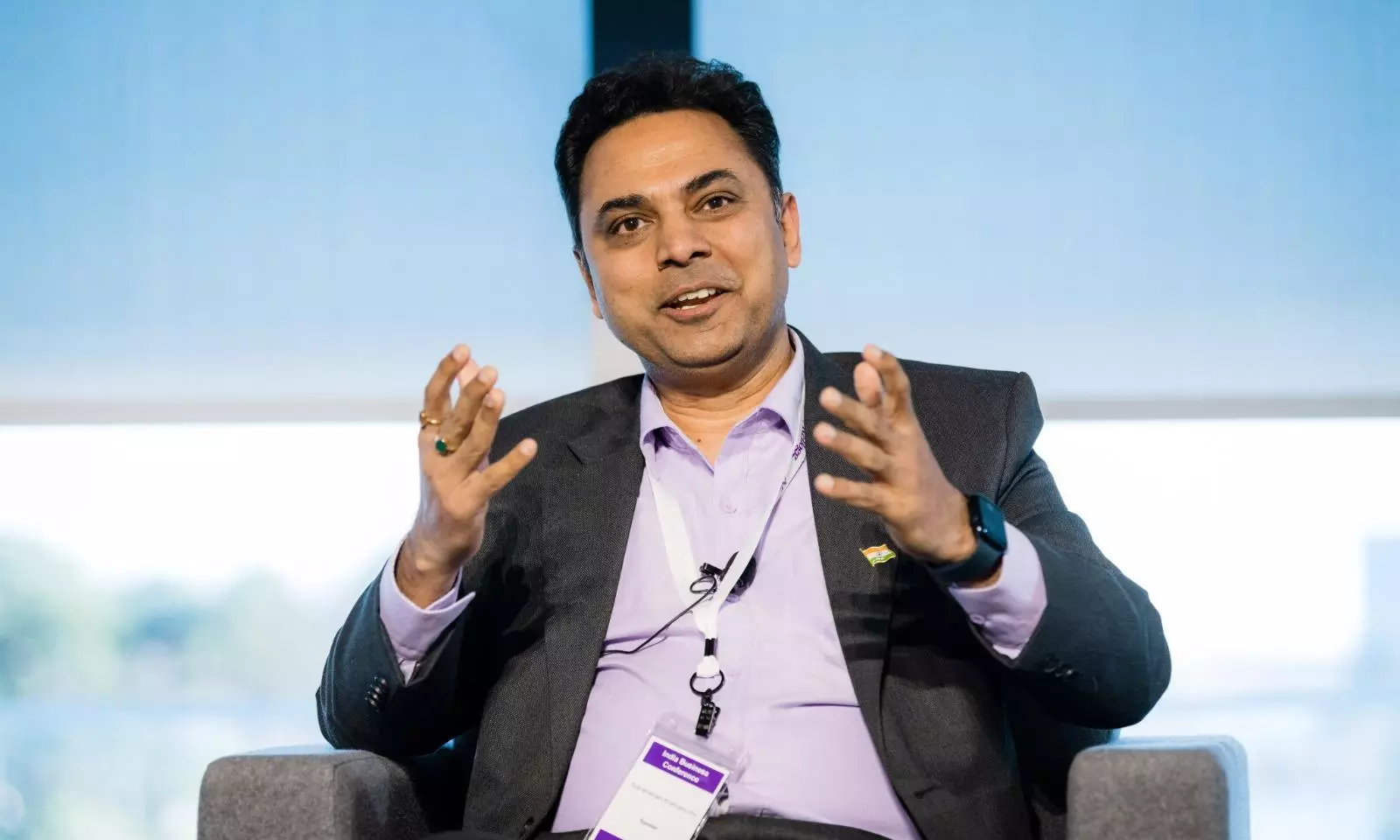
No job crisis in India; negative perceptions have outpaced reality: Krishnamurthy Subramanian
Former CEA says Indian economy has shown resilience post COVID-19 pandemic, and has potential to touch $55 trillion if it maintains 8% growth rate

Former chief economic advisor and executive director at the International Monetary Fund (IMF), Krishnamurthy Subramanian, exuded confidence and optimism about India’s growth story as he discussed the state of the Indian economy, the 'Viksit Bharat' vision, and the current ‘job crisis’ in an exclusive interaction with The Federal. Subramanian was confident that India could potentially become a $55 trillion economy if it maintains a consistent growth rate of 8 per cent.
Here are the edited excerpts from the interview:
How would you assess the current state of the Indian economy? What steps could India take to realise the Viksit Bharat vision in the next 25 years?
Post-COVID, India has demonstrated notable economic resilience, maintaining a growth rate of over 7 per cent amidst a challenging global landscape. This contrasts sharply with past crises. During the previous downturn, India entered in strong shape but emerged as part of the "fragile five," whereas this time, despite initial setbacks from issues like crony lending, the recovery has been robust. The current macroeconomic fundamentals highlight the strength of the Indian economy. Given this trajectory, India could potentially become a $55 trillion economy if it maintains an 8 per cent growth rate. Historical examples, such as Japan's remarkable growth from $215 billion to $5 trillion between 1970 and 1995—more than a 25-fold increase—provide valuable inspiration. Additionally, a significant reduction in inflation due to the inflation targeting regime is likely to result in a slower rate of rupee depreciation, further supporting economic stability and growth.
Full credit to the Finance Minister for upholding fiscal discipline, which is crucial for macroeconomic stability. However, the investment landscape remains a concern. Foreign Direct Investment (FDI) inflows have dropped to a five-year low, and private investments have also significantly declined in the first quarter of this fiscal year. Why so?
I encourage those covering the economy to thoroughly review the Annual Economic Survey. According to the data, private capital expenditure (capex) grew by about 20 per cent in 2023. Given that the economy is growing at 7 per cent, a 20 per cent increase in private capex is quite substantial. Although NSO data for 2024 is not yet available, the Economic Survey references Axis Bank data indicating a continued 20 per cent growth in private capex. While private investment is on the rise, further growth is essential to sustain economic momentum.
Former chief economic advisor, Arvind Subramanian, in a recent interview with us had also stated that there are risks to the economy. He pointed to three major risks – preferential treatment of "national champions", arbitrary state actions that unsettle investors, and supply chain vulnerabilities crucial for export-oriented industries. How do you respond?
I have been a firm believer that positive thinking is necessary for good outcomes and negative thinking can oftentimes be sufficient for negative outcomes.
Another important factor through which the Opposition corners the Narendra Modi government is the unemployment crisis. Do you think enough is being done to address the job crisis in the country?
No, there’s no unemployment crisis. This is an area where negative perceptions have outpaced reality. For instance, data from the KLEMS database, which is highly regarded and referenced by the IMF, indicates that over 12.5 crore jobs have been created, according to the Reserve Bank of India (RBI) report. Even when excluding agricultural jobs, the figure stands at 9 crore. While the focus on job creation is indeed important, media narratives often emphasise negatives, creating a binary perspective that overlooks the progress made. Just as a student who scored 80 out of 100 would be working towards a higher goal of 90, the emphasis on job creation by the government should not negate the substantial employment growth that has already occurred.
Well, I was focusing on the RBI consumer confidence survey published in June this year, which categorically states that there are real concerns around unemployment…
Examining the PLFS data, it is evident that post-COVID, key metrics such as the unemployment rate, labour force participation ratio, and worker population ratio have all improved and are trending positively, surpassing pre-COVID levels. High quality data supports the view that substantial progress has been made in employment.

